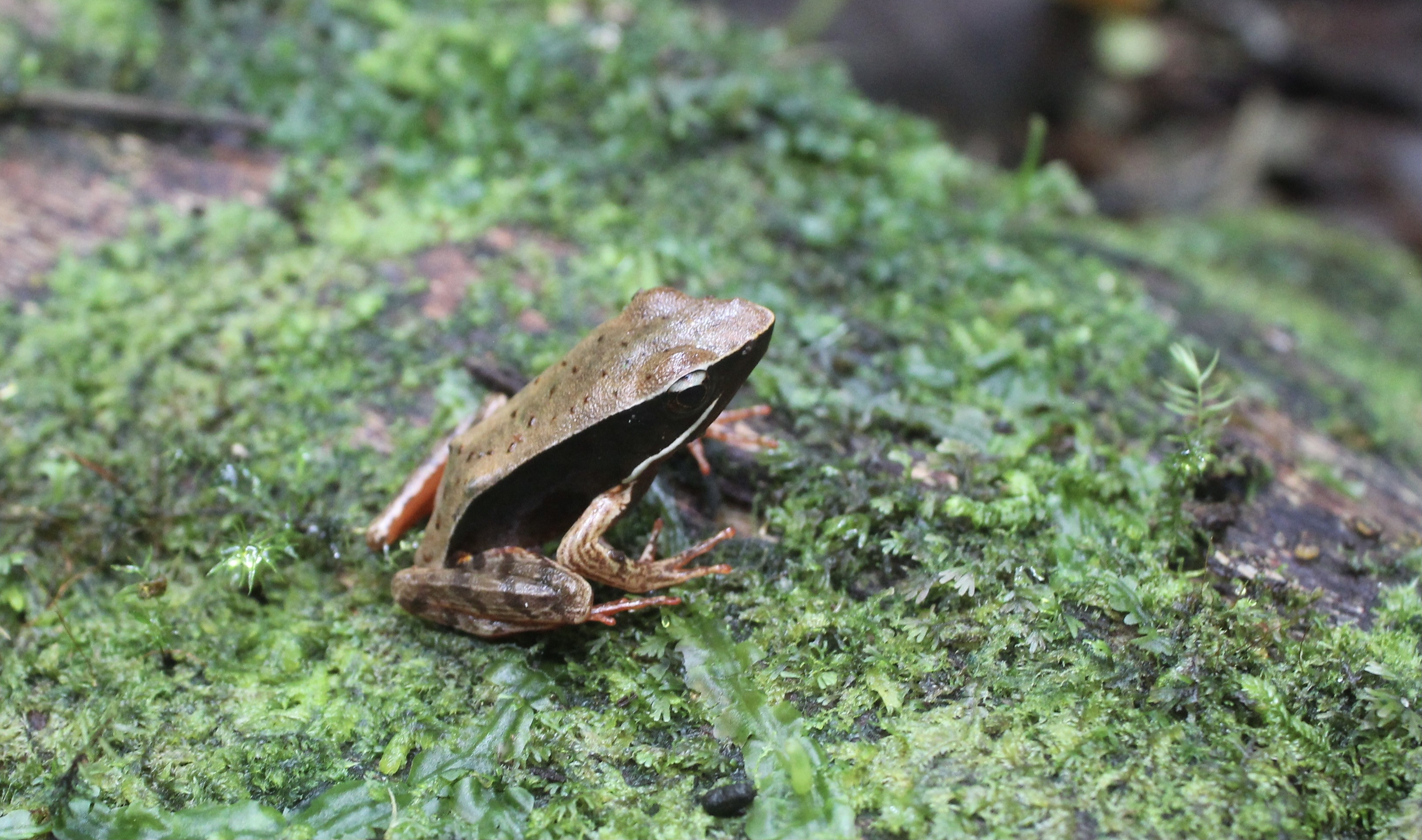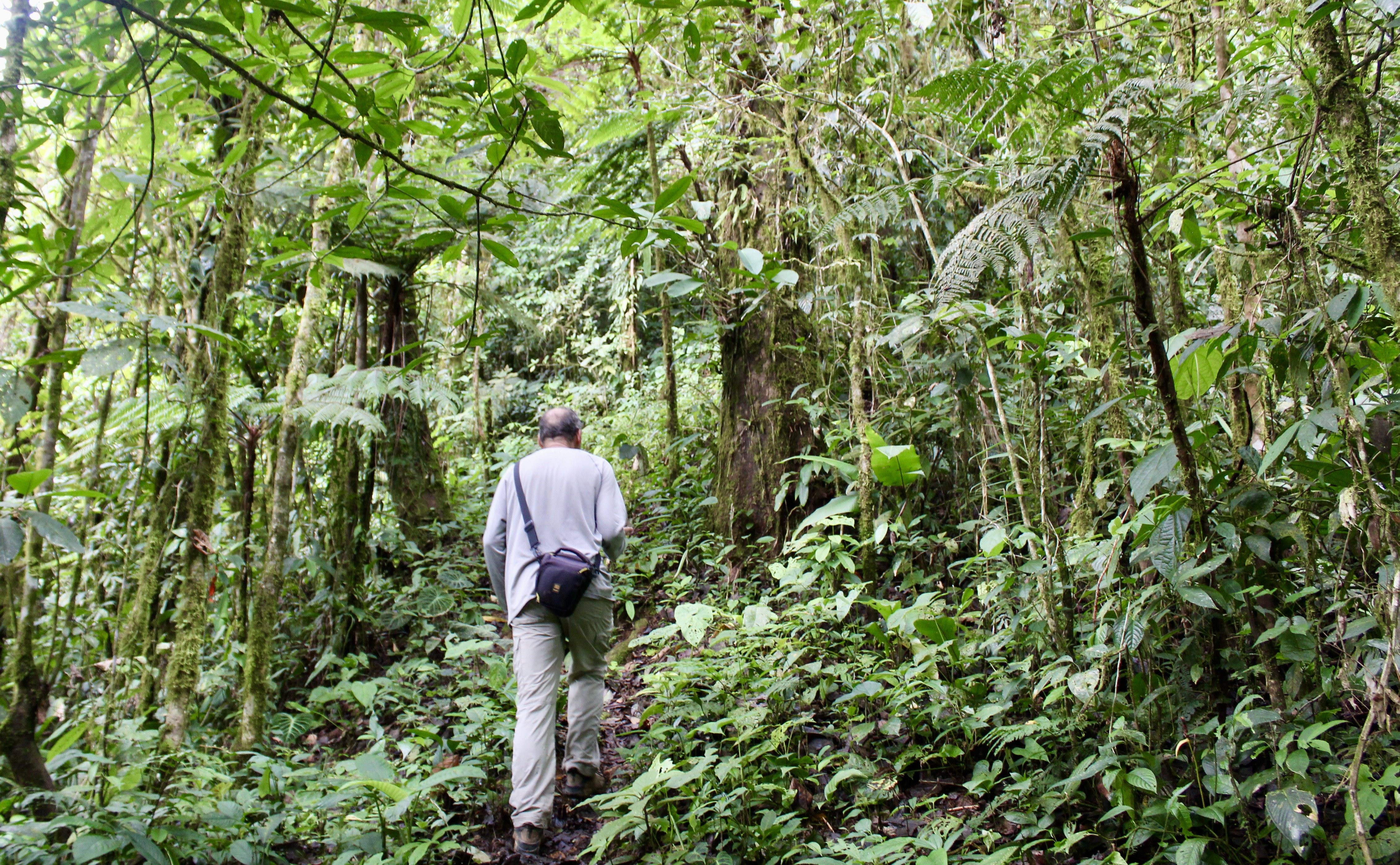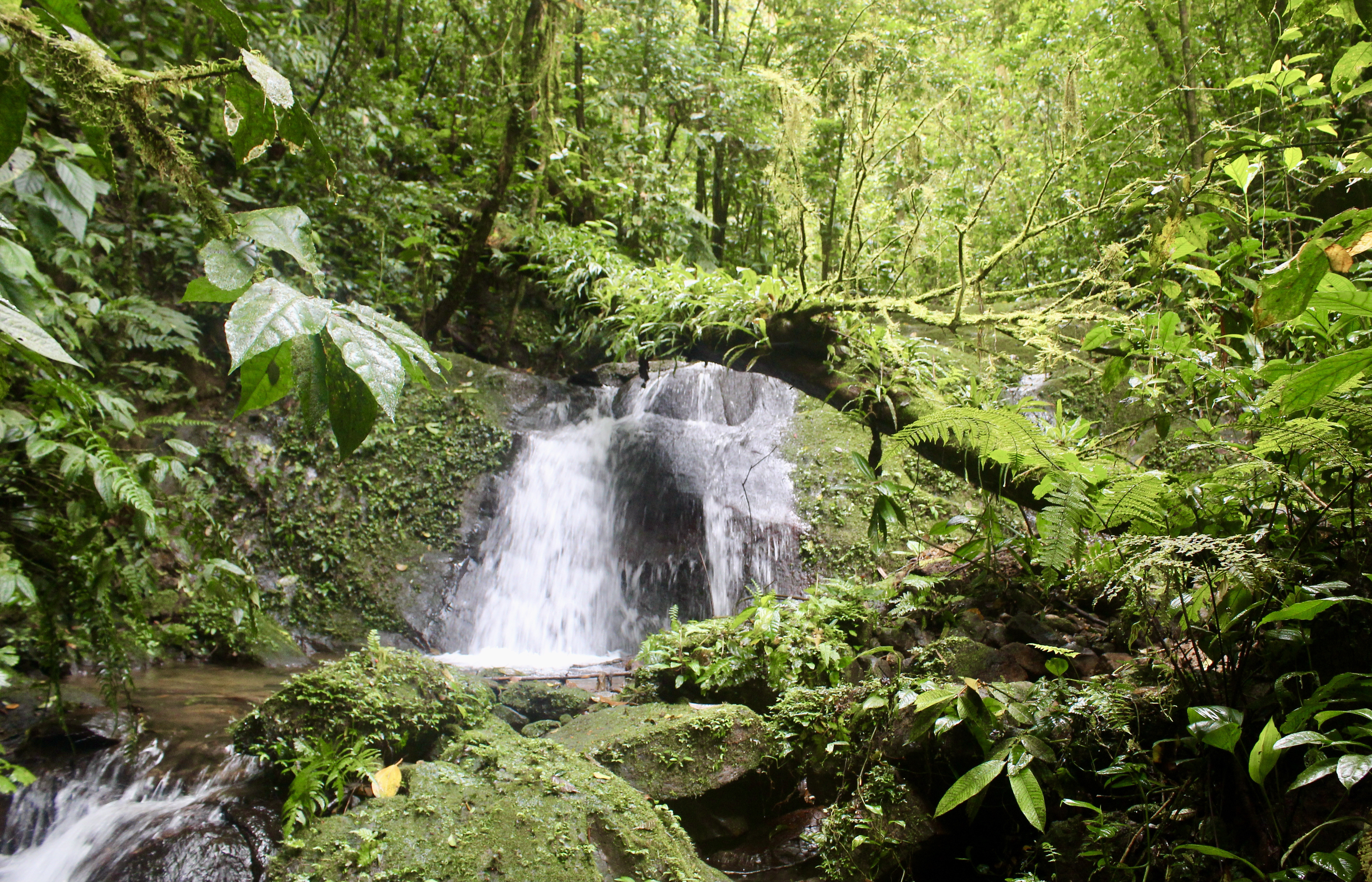The cloud forests of central Panama, shrouded in mist and mystery, are havens for an extraordinary array of life. These high-altitude jungles, perpetually damp and teeming with unique flora, come alive at night with a symphony of nocturnal sounds. Within this vibrant darkness, amongst the dense vegetation, dwell some of the world’s rarest amphibian species. Many are still unknown to science, while others are feared lost forever. Gazing at the rain clouds gathering over the volcanic peaks of El Valle, one can’t help but wonder: could the “Panama Song,” the unique calls of these potentially extinct amphibians, still echo through the forest?
For the past seven years, I’ve journeyed to El Valle, Panama, collaborating with the El Valle Amphibian Conservation Center (EVACC). Founded and directed by Edgardo Griffith and Heidi Ross, a dedicated biologist couple, EVACC is committed to safeguarding Panama’s most endangered amphibians. My usual missions involve setting up vital life support systems, improving infrastructure, or tackling husbandry challenges within EVACC’s specialized facilities. These modified shipping containers provide refuge for seven critically endangered Panamanian amphibian species, including the iconic Panamanian golden frog (Atelopus Zeteki).
 A researcher carefully examines a Warzewitsch’s frog in its natural habitat, highlighting ongoing amphibian identification efforts.
A researcher carefully examines a Warzewitsch’s frog in its natural habitat, highlighting ongoing amphibian identification efforts.
This trip, alongside these essential tasks, held a special purpose: venturing into the high cloud forest to listen for a sound that could signal renewed hope for Panama’s threatened amphibians. We were searching for the “Panama song”—the distinctive calls of amphibians presumed extinct, such as Raab’s tree frog (Ecnomiohyla rabborum). These remarkable, large tree frogs lay eggs in tree cavities and possess the incredible ability to glide, escaping predators by leaping and soaring through the canopy. EVACC has recently initiated a program deploying audio loggers in remote, high-elevation areas. These devices are designed to capture the elusive “Panama song”, the calls of species like Rabb’s tree frog, offering a chance to rediscover these lost voices of the rainforest.
These audio loggers are robust, weatherproof units containing a microphone, battery power, and digital storage on SD cards, all managed by a digital interface. Programmed to activate during twilight and nighttime hours, these listening devices are designed to record any “Panama song”—the calls of rare frogs within their range. Detection of such a call on a logger recording would provide EVACC biologists with crucial leads, pinpointing locations for targeted surveys to potentially rediscover these species.
 Setting up audio recording equipment in the Panamanian rainforest to capture the elusive calls of endangered amphibians.
Setting up audio recording equipment in the Panamanian rainforest to capture the elusive calls of endangered amphibians.
Equipped with GPS coordinates, fresh batteries and SD cards, and approximate location information for a deployed audio logger, gleaned from the previous team, we began our ascent. The climb was immediately challenging; intense heat and humidity soaked our clothing within minutes. Swarms of biting ants attacked our boots as the slope steepened, and we soon reached a confusing point where the trail seemed to disappear. We had arrived at the GPS coordinates, but it was clear they were inaccurate. Deciding to leave the non-existent trail, we pushed upwards into what appeared to be a break in the dense jungle, perhaps carved by past mudslides. This was no path; the going was arduous, and ominous rain clouds gathered quickly. Soon, torrential rain descended, turning the mud treacherous and making the increasingly vertical terrain even more perilous. In the Panamanian jungle, footing is only one concern; awareness of hand placement is equally vital. Eyelash vipers and stinging insects frequently rest on branches at eye level. These thoughts kept us alert as we pushed through clearing after clearing, each time hoping to find the audio logger, a beacon of hope in the dense green. Yet, each clearing revealed only more steep walls of vines and vegetation. Our determination waned, but we pressed on. Suddenly, my footing slipped, and I tumbled face-first into the muddy hillside. As I lifted my head, I was face-to-face with a jewel-like frog: a blue-bellied poison frog (Adinobates minutus). This tiny, toxic amphibian simply stared back, perhaps bemused by the clumsy, hairless ape who’d climbed so high in a storm.
 A minute blue-bellied poison frog encountered during a challenging climb, showcasing the incredible biodiversity of Panamanian cloud forests.
A minute blue-bellied poison frog encountered during a challenging climb, showcasing the incredible biodiversity of Panamanian cloud forests.
 A rainforest rocket frog observed in the field, contributing to the understanding of Panama's diverse amphibian population.
A rainforest rocket frog observed in the field, contributing to the understanding of Panama's diverse amphibian population.
The rain began to subside, revealing a hint of sunlight through a break in the dense canopy ahead, lifting our spirits. As we approached, sharp, stinging sensations erupted on my hands and wrists. We were pushing through a dense thicket of razor-edged grass, its blades inflicting paper-cut-like lacerations on our skin. Emerging from this painful vegetation, we finally reached a true clearing – the summit. However, the jungle was so dense that no panoramic vista was visible. We immediately began searching for the audio logger. I scanned left and right, pushing through thick undergrowth. Then, I spotted it – a flash of white against the green. A zip tie, used to secure the logger to a tree. We had found it! After moments of exhilarated celebration, high-fives echoing through the cloud forest, we replaced the SD cards and batteries, reprogrammed the unit, and secured its protective case. The descent was less a hike and more a controlled slide down a mud luge. Faster, certainly, but not safer.
 Retrieving the audio logger from its mount in the cloud forest, a crucial step in monitoring Panama's amphibian populations.
Retrieving the audio logger from its mount in the cloud forest, a crucial step in monitoring Panama's amphibian populations.
Back at EVACC, exhausted, mud-caked, and insect-bitten, we felt a deep satisfaction in overcoming a seemingly impossible challenge. After a shower and a cold drink, I stepped out into the moonlit EVACC grounds. Clouds were once again forming around the El Valle mountains. My gaze settled on the dark silhouettes of those jungle peaks, wondering if the logger we had reset would capture a “Panama song”—a sound of hope echoing through the darkness, a call that could bring back a species from the brink.
Learn more about the invaluable work of the EVACC foundation and consider making a donation online to support their vital mission of ensuring the survival of Panama’s incredible amphibian diversity for future generations.
